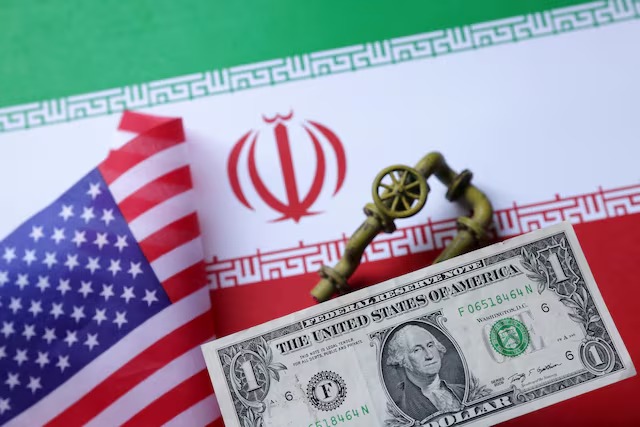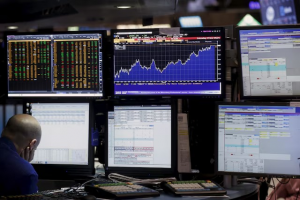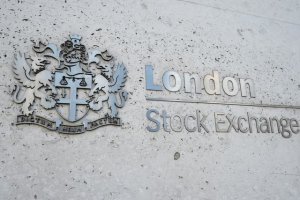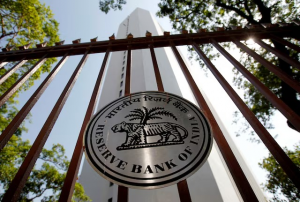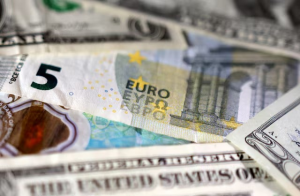What matters in U.S. and global markets today By Mike Dolan, opens new tab, Editor-At-Large, Financial Industry and Financial Markets The Reuters Tariff Watch newsletter is your daily guide to the latest global trade and tariff news. Sign up here. After a tentative ceasefire was announced in the Middle East, U.S. crude, gold, Treasury yields and the dollar gave up all gains registered since Israel's initial attack on Iran on June 13. Throughout this episode, energy market worries never amounted to a true 'shock' as movements of oil were largely unaffected. And given the large global supply overhang and slowing world demand, annual U.S. oil price gains never turned positive at any point over the past 12 days, failing even to set a new high for 2025. Advertisement · Scroll to continue
Report This Ad I'll discuss all of today's market news below and then move away from the headlines to explain how plunging immigration and the graying of America may be impacting the Federal Reserve's view of the U.S. labor market. Today's Market Minute * Oil tumbled 4%, global shares surged and the dollar dropped on Tuesday as U.S. President Donald Trump said a ceasefire between Israel and Iran was in place. * However, Israeli Defence Minister Israel Katz said on Tuesday he had ordered the military to strike Tehran after Iran fired missiles in violation of the ceasefire. * Crude oil's sharp reversal of the Israel-Iran war premium shows the power of a few words from a key player to move the market, but ROI columnist Clyde Russell suggests the bigger issue here may be who played silent: Iran's allies. Advertisement · Scroll to continue * Investors globally appear to be gradually reducing their exposure to dollar-denominated assets, driving the greenback down to its lowest level in years. ROI markets columnist Jamie McGeever explores where most of this selling is coming from. * Rapid growth in the installation of batteries is upending power systems across the United States. ROI columnist Gavin Maguire outlines the key battery system trends to track. Oil, rates and the dollar tumble Iran's token response to U.S. bombing of its nuclear facilities over the weekend was a well-telegraphed missile launch on U.S. bases in Qatar. That was quickly followed by U.S. President Donald Trump's acknowledgement of Tehran's intent to de-escalate and a call for a ceasefire that Israel said it would abide by. Whether that ceasefire will hold remains uncertain, with some exchanges between Iran and Israel reported this morning and the situation still tense. 00:19 Market Rundown: Markets waver as ceasefire appears short-lived
The video player is currently playing an ad. You can skip the ad in 5 sec with a mouse or keyboard But as it stands before Tuesday's U.S. open, crude is just $66 per barrel - $12 below Monday's peak - and just slightly up from a two-week low of $64.38 earlier in the session. In fact, Oil is now down almost 18% year-over-year. The S&P 500 rose 1% on Monday, and futures are up another 1% before Tuesday's bell. The VIX volatility gauge (.VIX), opens new tab is back to where it was on June 12, just above 18, with the gold price falling as well. The dollar skidded (.DXY), opens new tab lower too, with the euro back within a whisker of 3-1/2-year highs and the yen recovering all of Monday losses. European and Asia shares surged more than 1% too. Wall Street now switches attention back home to the Federal Reserve, with Fed Chair Jerome Powell starting his two-day, semi-annual congressional testimony today just as some of his colleagues have stated turning remarkably dovish on the interest rate outlook.
Trump clearly thinks the Fed should move immediately to slash rates by "two to three points". The president has been lambasting Powell on an almost daily basis for not doing so. But Trump's appointees to the Fed board, Michelle Bowman and Christopher Waller, are now both advocates of easing sooner rather than later, opening up a big split between hawks and doves at the central bank. As many as seven policymakers last week indicated that they expected no rate cuts at all in 2025. But Bowman, who recently was one of the most hawkish members of the Fed's policy making council, electrified the rates market on Monday by saying it's time to consider easing as soon as next month. "Should inflation pressures remain contained, I would support lowering the policy rate as soon as our next meeting in order to bring it closer to its neutral setting and to sustain a healthy labor market," said Bowman, now Fed Vice Chair for Supervision. A parade of Fed speakers on Tuesday's slate could pour cold water on that view, but many market players think there is some jockeying for position going on at the central bank, with Trump expected to soon announce his pick to replace Powell when the Fed Chair's term expires next year. Even though Fed futures markets are still only pricing in a roughly 20% chance of a July cut, full year easing bets rose almost 10 basis points to near 60 bp after the Bowman comments and oil price retreat. Treasury yields responded quickly to the rate signals and energy relief, even with another heavy week of debt sales kicking off on Tuesday with $69 billion of 2-year notes up for grabs. Benchmark 10-year yields plunged below 4.3% for the first time in six weeks on Monday, though they've nudged back above that level again before today's bell. Elsewhere on Monday, Tesla shares (TSLA.O), opens new tab jumped over 9%after the electric-vehicle maker started testing its long-awaited robotaxi service, which CEO Elon Musk has touted as a driver of Tesla's lofty valuation. US migrant halt may wipe potential job growth If you're wondering why so many U.S. Federal Reserve officials are remaining hawkish despite slowing growth, consider how the dramatic drop in immigration and the graying of America are impacting the unfolding labor market picture. Often overlooked by markets focused on the latest news about tariffs, geopolitics and energy markets, curtailing illegal immigration, a signature policy of President Donald Trump, is now starting to move the needle on the U.S. jobs outlook. The flow of migrant workers into the U.S. has effectively halted over the past year. The pace was already slowing sharply before the election but has ground to a near halt along with the rise in deportations this year. Couple that with the steadily aging population of existing workers, and it looks like a labor crunch could be on the horizon. Economists at Barclays tracking these trends reckon that 'potential' non-farm private payrolls growth - or the level of extra jobs that can be created without leading to worker shortages - could fall to less than 10,000 per month by the end of next year from more than 100,000 today. They estimate that potential job growth will fall to about 60,000 within the next six months, slowing potential economic growth to only 1.4-1.6% year-on-year through next year from just over 2% now. These numbers are pretty stark when considering that average monthly private payrolls growth has been around 172,000 over the past two years. Meanwhile, Barclays says it expects the effects of population ageing to "intensify very soon", putting even more downward pressure on jobs growth. The combined impact of the two forces is "about to create significant and persistent headwinds to potential growth in the labor force and economic activity," it said. The ingredients used to make the forecast are sobering.

